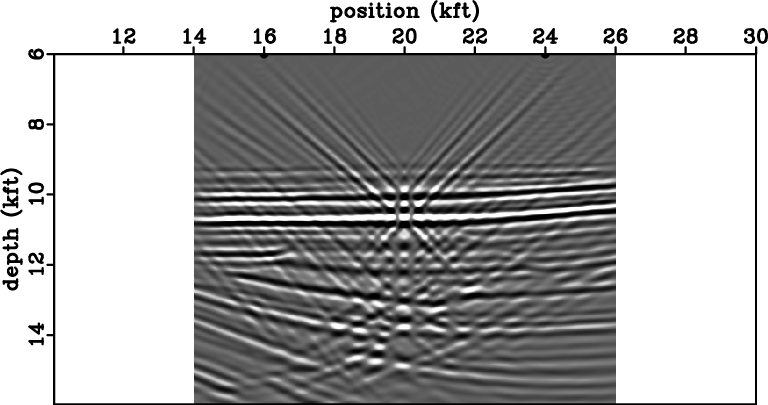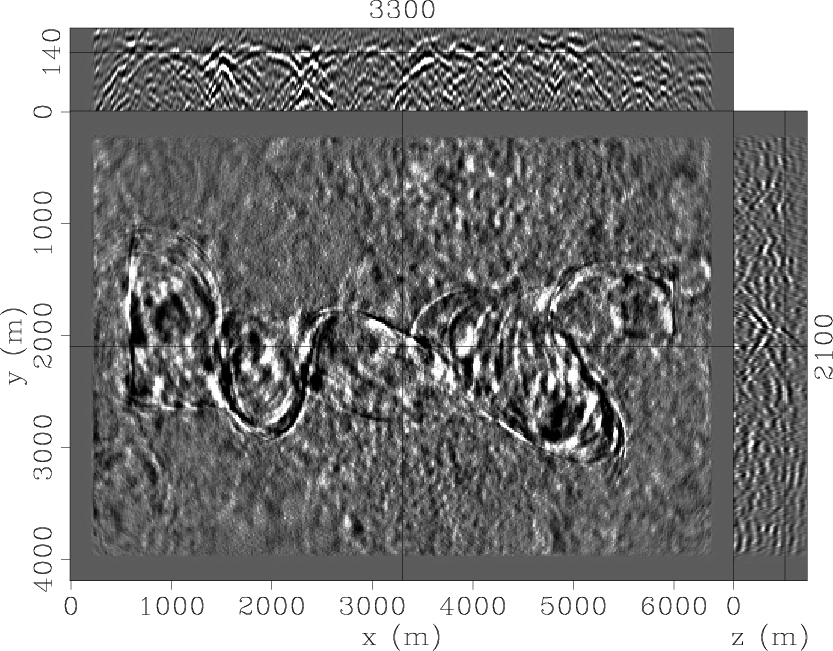New paper has been added to the collection of reproducible papers:

October 6, 2007 Documentation No comments
New paper has been added to the collection of reproducible papers:

September 20, 2007 Celebration No comments
OpendTect announces plans to implement a Madagascar interface:
http://www2.opendtect.org/madagascar_rsf.html.
OpendTect is a seismic interpretation software system as well as a research and development environment for seismic interpretation.
September 17, 2007 Documentation No comments
New paper has been added to the collection of reproducible papers:

September 17, 2007 Documentation No comments
New paper has been added to the collection of reproducible papers:

September 17, 2007 Documentation No comments
September 13, 2007 Documentation No comments
How does a user approach documentation? He has some concrete geophysical task to do, and must find out which of the 400 or so programs in Madagascar ( sfdoc -k . | wc -l ) does what he needs. He can get some help from sfdoc, but that does not account for keyword ambiguity and does not offer a quick overview of what is available. Moreover, there is no quick way of knowing whether the program will fit the user’s data. Sometimes the documentation mentions a label, i.e. 2-D or 3-D, but is it prestack or poststack? It requires a velocity file; would a 1-D v(z) array work, or does the process work in v(x,z)? Does it take slowness or velocity? Half offset or full offset? Much too often the answer needs to be found by reading the source code – if the poor user did not give up already, that is.
Some of these issues (which kind of offset, especially) can be countered by standardization. The dimensionality issue can be countered by some “static typing” mechanism, in which the program communicates through the self-doc to SCons and to the documentation system what kind of data it accepts and it outputs, permitting filtering of documentation to display, say, only programs that can take as input a prestack 2-D line and do not require a velocity model. However, the problem of discovering functionality still remains.
To counter this problem, I started a map of Madagascar: a Task-centric program list. I have done so far what my patience and time allowed. I hope it is useful to other users as well. There is still a list of programs yet to be classified. It is also quite possible that I made classification mistakes. Any help with the page is appreciated. As I found out firsthand, exploring Madagascar is great for getting to know it!
September 1, 2007 Uncategorized No comments
Another old paper has been added to the collection of reproducible papers:

August 28, 2007 Celebration No comments
Yes, that’s right, now you can get your Madagascar apparel, mugs, wallclocks, mousepads, bags and more at the Reproducibility Store! Prices are as low as they can get, as no markups were added to prices given by Cafepress. You can check that by opening your own store with them, it takes 10 minutes and costs nothing. They say they offer bulk pricing for orders over 15 items. Feedback is welcome on the quality of items and service, as we have only seen the items on sale as computer-generated images 🙂 Suggestions for products to be added are welcome; Cafepress’ interface kindly offered to put the logo on more items, including underwear, but sometimes there can be too much of a good thing 🙂
July 11, 2007 FAQ No comments
Two of the hidden parameters (datapath= and out=) are described in the Guide to RSF file format. Other parameters like that include
July 11, 2007 Celebration No comments
In one year of public existence, Madagascar has been showing a good rate of spreading. More than 1200 copies of the stable version were downloaded from Sourceforge, with the record activity in the last four months. The number of registered developers went from 2 to 16. Needless to say, many important deficiencies remain and will require a community effort to get overcome. Several new issues were pointed out by developers of OpendTect working on integrating Madagascar tools with their product through a graphical user interface.
Recent presentations on Madagascar are available on the Conferences web page.